- Learning time
- 10 minutes
- First play time
- 30 minutes
Kami
Designed by: Uncredited
In Kami, players unleash warriors, dragons and even pagodas onto each other in a game of mythical combat.
The game can be played by 2, 3, or 4 players as a 2v2. We’ll describe the 2v2 game here.
Your partner sits diagonally opposite you so turns alternate between teams. Every player is dealt a hand of eight cards and takes turn playing pairs of cards to the table – one to their defensive line, and one to their attacking line. The starting player plays a defensive card face-down and an attacking card face-up, before play moves clockwise to the next player. They can only play an attacking card if they are able to counter the previous attacking card by playing a matching card to their defensive line. If they cannot – or choose not to – then they pass, and play moves on. Despite the adversarial nature of ‘countering’ you can actually counter your team-mate. Why? Because the goal is to be rid of all your cards first, so anything that helps achieve that is worth doing – or considering, at least. The cards are beautifully designed with different strength values, but the only card with special rules is the Empress: there are two Empresses and they can break the matching rule by defending against any card at all. An Empress can also be used to attack – hugely powerful, because she can only do so if the other Empress has already been played in defence.
That move guarantees everyone will be forced to pass and you get another turn without anyone countering: you can now play any card you like as defence, face-down, and attack again. If you manage to end the round in this manner by playing your last card, you double your points for winning: which are the points value of your final attacking card.
As soon as one team reaches 15 points in total, they win the game.
With two players there’s an additional level of intrigue. As well as their hand of eight cards, each player can also access the mercenaries played to the table: eight face-down with eight face-up on top of them. If you can’t, or choose not to, play from your hand, you can play a mercenary instead. When a face-up mercenary is taken, the hidden one beneath it flips over and becomes available. This dynamic at first seems like a kind of saving grace for when you don’t have the defensive card you need, but it actually offers more than that. Because each card has a limited amount of duplicates, savvy play can see you using the mercenaries not just to defend, but to attack as well.
At time of writing Kami is unavailable in the UK
Joe says
I've not played this.
The guru's verdict
-
Take That!
Take That!
It's a battle, although abstracted enough to feel less in-your-face than some.
-
Fidget Factor!
Fidget Factor!
Low
-
Brain Burn!
Brain Burn!
Low, although playing your cards randomly is unlikely to prove a long-term success.
-
Again Again!
Again Again!
It's not a game that can ever be 'played-out' due the the variety of cards and how they fall. But it's not dripping with variety either.

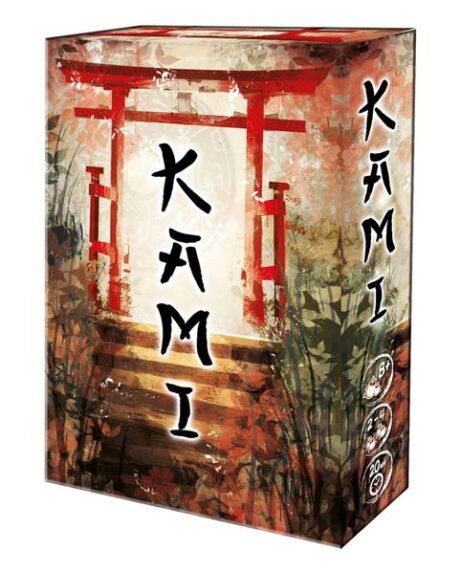



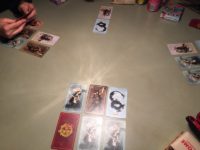



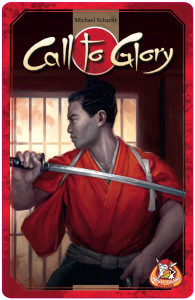


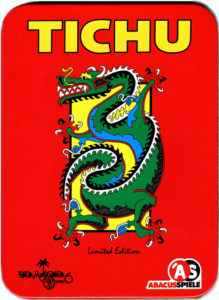
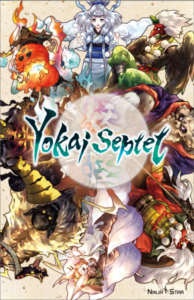
Sam says
On our first play everyone seemed more befuddled than warlike, as despite the variety in card strength, from the lowly Soldier to the commanding Empress, the 'battle' is actually a series of ties where every single card - bar the last one played - is cancelled out by its' successor. This really have been anything (or nothing) at all, but the Kami theme does at least allow for some very beautiful illustrations. We felt all felt lack of control over proceedings with most choices feeling like a shot in the dark, but though it failed to jump out the box and grip us by the lapels, I've enjoyed many subsequent head-to-head plays with my son. The only caveat here is that you can sometimes be dealt a hand that you'd have to play quite badly to lose with - starting with both Empresses puts you into a strong position - but in theory that luck balances out over several plays.